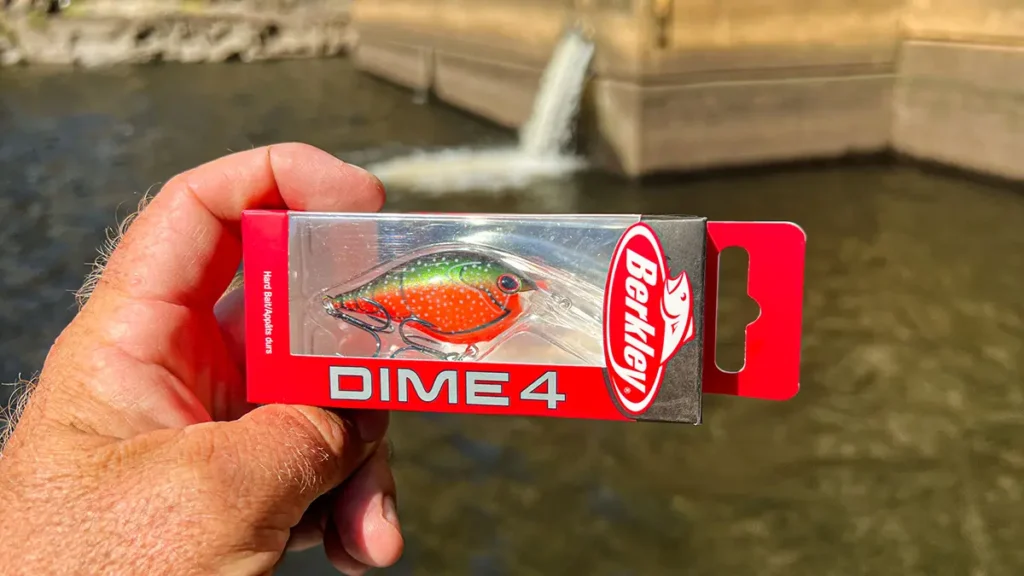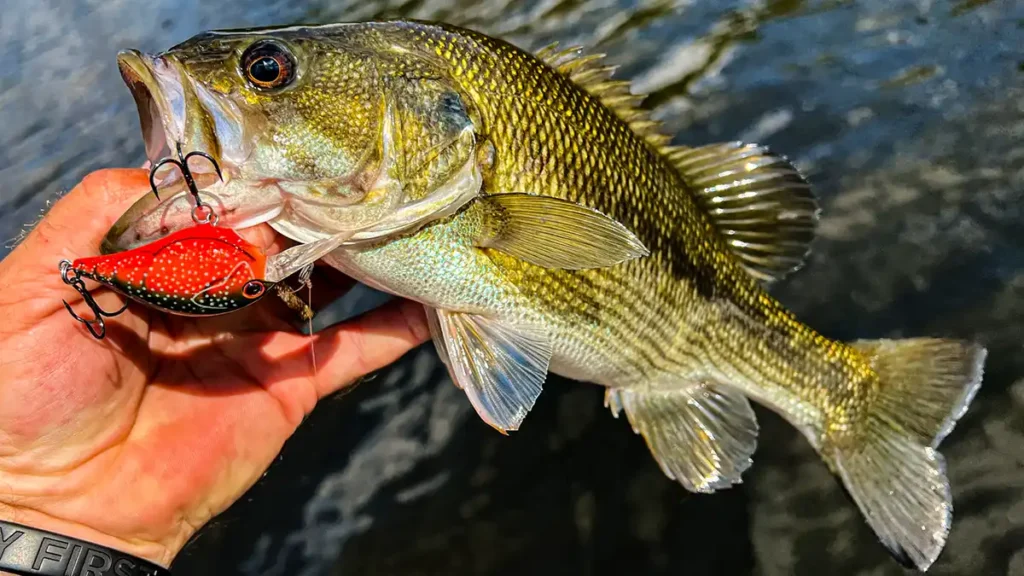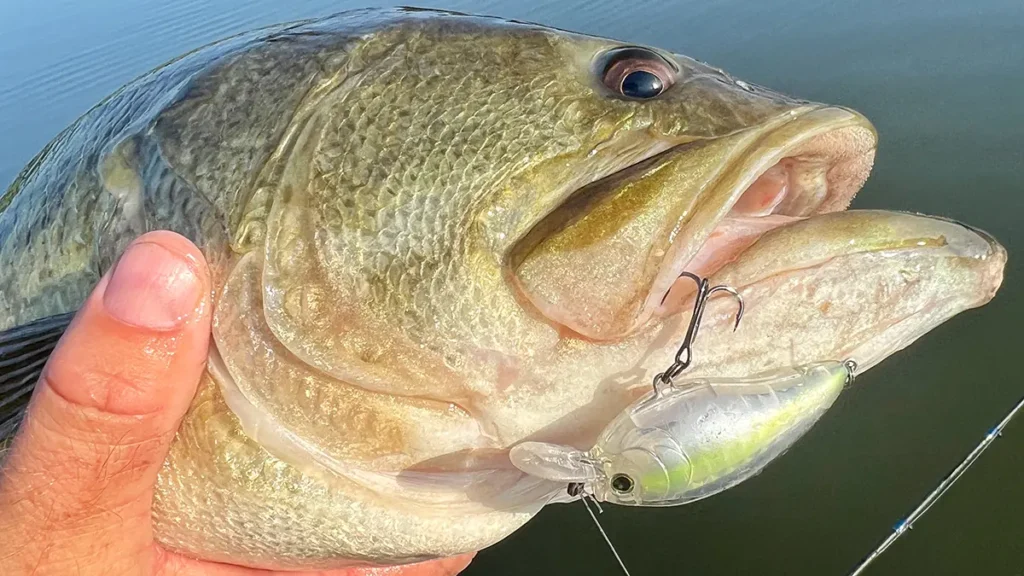Warning: Undefined variable $k in /home/nginx/domains/wired2fishcom.bigscoots-staging.com/public/wp-content/themes/understrap-child-0.6.0/functions.php on line 984
Warning: Undefined variable $k in /home/nginx/domains/wired2fishcom.bigscoots-staging.com/public/wp-content/themes/understrap-child-0.6.0/functions.php on line 987
Shallow cranking for bass can be very productive in the summer months. Summertime is synonymous with deep water and offshore fishing in the minds of many a bass angler. But as the majority of anglers (and bass for that matter) move offshore, a shallow remnant remains.
The fish that stay shallow are often targeted more frequently with topwaters and soft plastics than they are crankbaits. Admittedly, Texas rigs are more effective at picking off shallow water bass that are a little sluggish due to extreme heat. But topwaters are simply a whole lot of fun to fish with, so even if the bites are fewer and farther between, many anglers gravitate to a topwater in the summer.
There is a nice little pattern that occupies a sweet spot in between. Shallow cranking in the summer is a great way to cover water quicker than you can with a worm, while also producing more bites than you’ll typically get on a topwater. And, there are some situations where a shallow running crankbait is simply better suited than any other bait.
Today, we’re going to look at three keys to focus on so that you can increase your chances of having a successful shallow summer cranking session. That was a mouthful. Let’s dive in.

CURRENT
Current is one of the biggest keys to finding a productive summertime spot, regardless of the bait you’re using. But for shallow crankbaits in particular, current is a mighty good thing to have. Current positions fish behind cover, or pushes them down tight to the bottom. Both of these situations make a crankbait a great selection.
Current can come in many different forms. I’ve caught good numbers of fish the last few years fishing a shallow-running crankbait beneath dams. These areas are often rocky and shallow, less than 6 feet deep. In these situations, shallow running crankbaits like the Berkley Dime 4 which dives down to 4 to 6 feet are great for getting down to the bottom and grinding away.
Some of the SPRO Little Johns are great for this style of fishing as well. And I’ve caught a few fish doing this same thing with a bigger squarebill, like the Shimano MacBeth 63 Original, which dives down to about 5 feet. In any case, just firing these shallow cranks around below dams in the summer is a great way to grind up a bite and even get on a pattern where you can catch dozens of bass.
Creeks and small rivers also have good concentrations of current, typically funneled and pushed through tight spots where rapids form. Shallow crankbaits are great baits for firing through the swiftest waters just below the rapids. I like to do this from the bank, or while wading creeks, to give me a cool alternative to fishing from the big boat. The Yo-Zuri 3DR-X SR is a pretty killer crankbait for smaller waters like this. You can read my review of this bait, as well as reviews of the MacBeth and Dime 4 below:
Yo-Zuri 3DR-X SR Crankbait Review
Berkley Dime 4 Crankbait Review
Shimano Macbeth 63 Original Crankbait Review

WATER CLARITY
Bass will set up in shallow, clear water in the summertime for sure, especially if there is current. But current with a little color to it is often even better for shallow cranking. And, if there’s no current present, you’re going to really want a little color to the water at minimum if you’re going to catch them cranking shallow.
The bass that set up in shallow, clear slack water aren’t easy to fool with a crankbait. These bass are more susceptible to finesse presentations like wacky rigs and big baits like Whopper Ploppers, glide baits and wakebaits. Basically, you’ll need to go to one extreme or the other to catch bass in these conditions.
But if you can get a little stain to the water, narrowing the visibility down to 2 feet or less, a shallow crankbait becomes a real player again. In these situations, a bass has to rely more on feel than on sight in order to feed. So, the vibration of a crankbait is something they can pick up on using their lateral lines, then track down and attack.
Contrary to what many believe, there’s no water too muddy to catch them in during the summer. I’ve caught bass in 80 and 90 degree water with an inch or two of visibility at best, often on a squarebill. You won’t get a lot of bites doing this, but it is a good way to grind up big ones, even in the heat of the summer. And, again, remember that a little current will make anything better in the summer. Dingy to muddy water with a little flow to it is really the ideal setup for shallow summer cranking.

COVER
Finding cover is the final key to shallow summer crankbait fishing. Even when fishing under dams where you may feel like you’re casting your bait around aimlessly, beneath the water there are actually dozens of little irregularities the bass use. They tuck themselves down in little crevices, set up behind old stumps and stick their noses behind boulders; anything they can to get out of the current and wait for prey to wash by them.
When fishing in shallow muddy water that has no current, look for laydowns, rocks, docks, brush and basically any other hard cover you can find to crank around. In these situations, a squarebill is often the best selection. The Bill Lewis SB-57 is one of my absolute favorites, and this bait and others like it have boated big bass for my dad and I during many a Wednesday night derby during the summers.
One week in particular, dad was fishing a bend in the creek that had a few long laydowns in it. The trees were pretty spread out from one another, the water had a good bit of color to it (1 to 2 feet of visibility) and the current was pretty steady—the perfect scenario to crank one up.
There was next to nothing in the boat at the time; maybe a couple little keepers. Dad tossed the SB-57 into one of these laydowns, bumped the bait along through the limbs and laid into one, wrestling the approximate 5-pounder into the boat. The next week, we had a repeat performance of a nearly identical bite from another 5-pound-class fish from one of these same tree tops.
Now, we have fished those same 3 or 4 trees dozens of times since then, only catching one more good one in that stretch. But, during those couple weeks, the setup was perfect for shallow cranking. The water was muddy, there was current and there was cover present. The crankbait entered the scenario and plucked a couple big ones out of it.
Don’t be mistaken. All bass don’t move deep in the summer. Several will stay shallow and use current, cover and muddy water to feed. There are a few baits that work better in particular situations, but a shallow running crankbait should definitely be in your rotation. Use them to pick apart cover in 6 feet of water or less and you’ll find success cranking shallow this summer; I’m sure of it.












